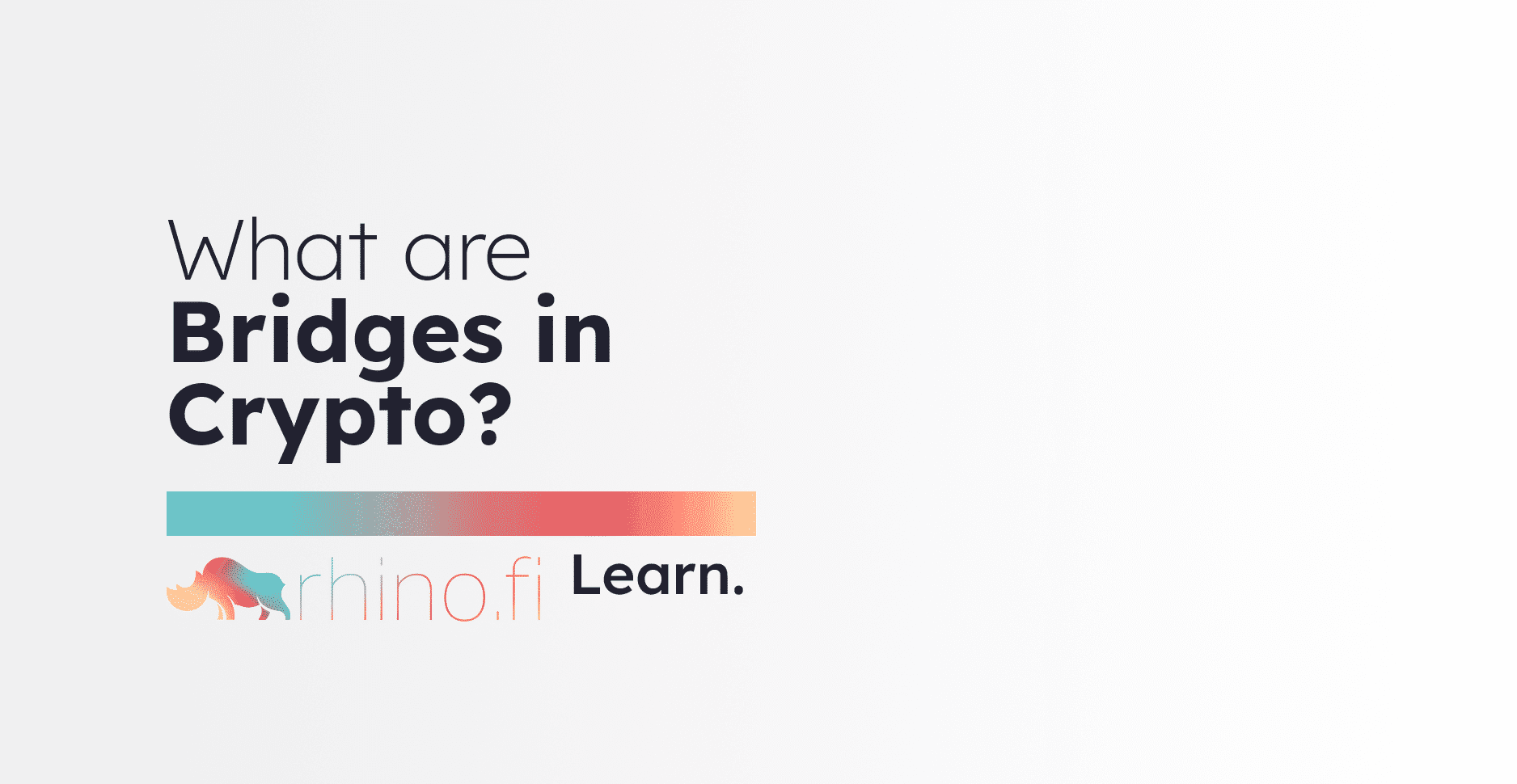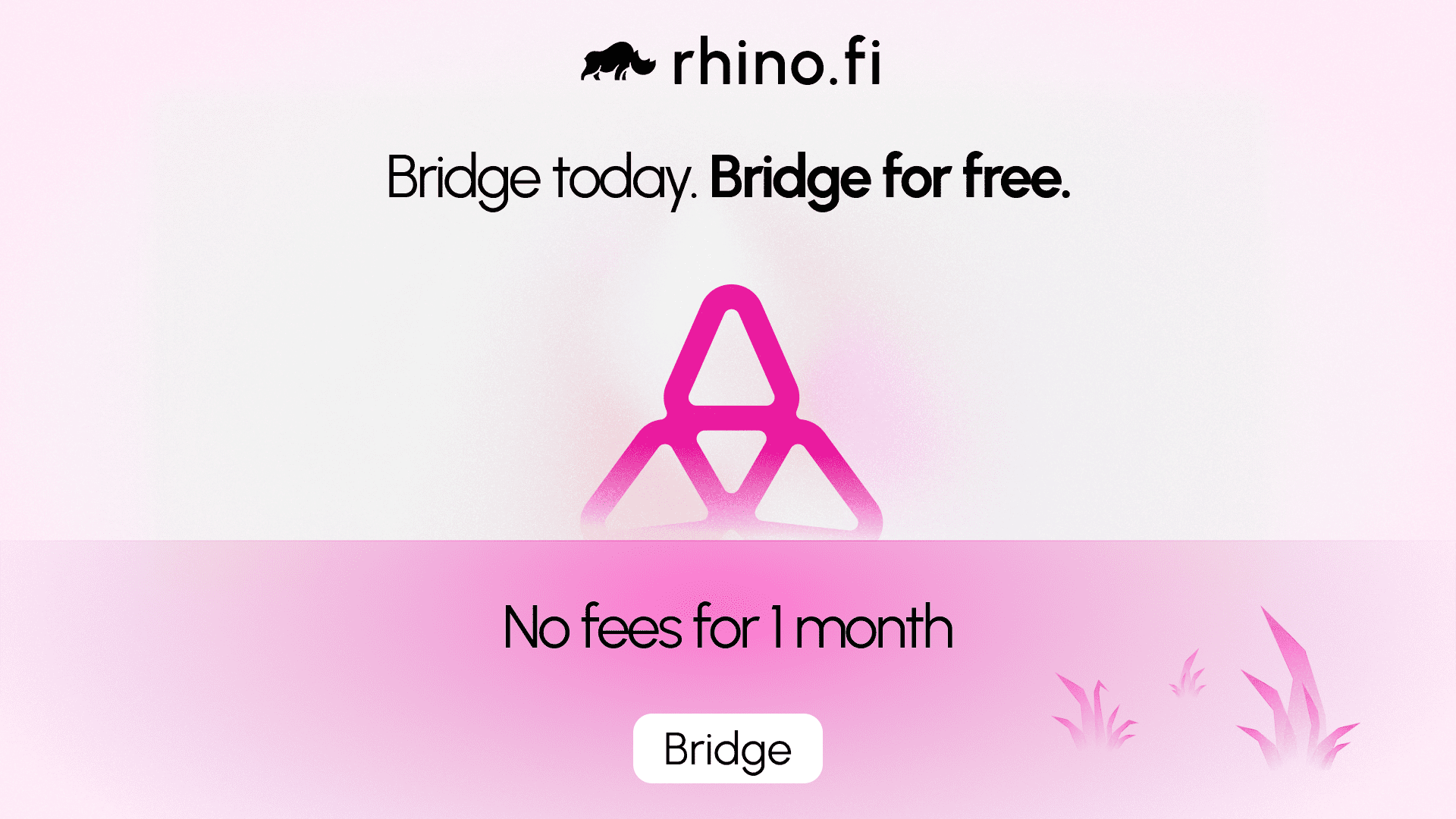A bridge in the digital world functions exactly the same as a bridge in the physical world: it allows you to cross between territories that would otherwise be cut off from one another.
In the physical world, bridges are used to connect two pieces of land. In the digital world, they’re used to connect blockchains.
In this edition of RhinoLearn, we’re going to talk you through how blockchain bridges work, why they’re important, and how you can make the most of them.
Why we need bridges
Blockchains are designed to be islands, each with its own unique rules and code.
So if a hacker really wants to take down a blockchain, they have to spend oodles of time familiarising themselves with that chain’s peculiarities (and even then they’re almost certain to fail).
But this uniqueness has drawbacks, too. While it makes blockchains more robust, it also prevents them from talking to one another. And this creates difficulties for everyday users.
If you have assets on a particular blockchain, you can do anything within that ecosystem: use exchanges, pursue investment opportunities and access all the decentralised apps. If you want to transfer tokens between two different blockchains, however, there’s no natural way to do this.
So if you’ve got tokens on Bitcoin and a cool new decentralised exchange opens on Solana, you can’t just move your tokens over there. If you’ve bought tokens on Binance, you can’t use them to access a decentralised app on an Ethereum-based ecosystem like Polygon.
In the old fiat world, you wouldn’t face this problem: if you want to travel from one physical piece of land to another, there are loads of different forms of transport to take you there, and you can swap your money in seconds using currency exchange sites.
Crossings should be just as easy in the crypto world.
This is where bridges come in. Bridges provide a middle point between the rules and code of two different blockchains, so data and value can flow freely between them.
How bridges work
Each bridge is basically a smart contract – a self-executing chunk of code that triggers a specific output when a user performs a particular action.
Smart contracts are used for all kinds of things in the blockchain world, most notably executing transactions. In the case of bridges, they can be programmed to ‘burn’ tokens on one side of a bridge and ‘mint’ them on another.
In other words, when a user wants to send a token across a bridge, the smart contract destroys the token on their departure bridge and creates a new one on the destination bridge. And to make things even better, smart contracts can modify tokens to be compatible with those in their destination ecosystem.
Let’s imagine a user wants to send Bitcoin (BTC) from its own native blockchain to Ethereum. This is a seriously complex operation: not only do we have all the problems of sending assets between blockchains, there’s the additional problem that Ethereum does not recognise the BTC (it’s a bit like trying to play a PS5 game on the Sega Genesis). So we have to create a new token, Wrapped Bitcoin (WBTC) which is compatible with the Ethereum network.
A bridge’s smart contract can do this. When the user clicks ‘send’, it not only destroys the BTC token on the Bitcoin side and creates it again on the Ethereum side; it concerts the BTC into WBTC on a 1:1 basis. So now you can use your WBTC to access decentralised apps and exchanges on Ethereum – and if you want to go back to the bridge to convert your WBTC back into BTC, you can do so.
How bridges ensure security
While there have been a small number of hacks to blockchain bridges, the overall security level is extremely high: when set against the number of incidents that happen on bridges in the real world (like failures or accidents), the total number of hacks is miniscule.
To ensure this security, bridges can be divided into two distinct types: trust-based and trustless (or centralised and decentralised if you prefer).
With a trust-based or centralised bridge, you essentially hand over your coins and trust a central body to manage everything for you. This body oversees a group of individual supervisors, who take responsibility for maintaining the bridge – sending information both ways and managing communication. A central mediator has the power to accept or reject transactions.
With a trustless or decentralised bridge, in contrast, you place your trust in the technology itself: a set of pre-built rules governs the operation of the bridges and guarantees its transactions. So there’s no physical body overseeing everything.
Where rhino.fi goes further
For all their brilliance, bridges – or at least the bridges we’ve seen in crypto up to now – can cause some friction for users. They require us to hold different wallets, and pay network fees on both sides.
However, rhino.fi has removed these hurdles.
As part of our move towards multi-chain DeFi, we’ve built bridges which are invisible and undetectable at the front end. In other words, you’ll never know you’re using them.
We’ll do all the work at the backend, so you can get on with what makes you money.
So, in summary:
- Bridges allow two blockchains to communicate with one another.
- This, in turn, allows users to send assets from one blockchain to another and access opportunities across chains.
- Bridges are based on smart contracts, which allow tokens to be mint and burned in crossing chains.
- Bridges can be either trust-based or trustless.
- rhino.fi has developed its own type of bridge that is undetectable at the front end.
Enjoyed this edition of RhinoLearn? Check out our explainer on rollups and find out how projects like rhino.fi validate transactions in bulk, streamlining the trading experience for our users.





